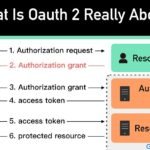European alternative: cidaas vs Okta
- The Landscape of Identity and Access Management Solutions
- The Rise of European Alternatives in IAM
- Cidaas vs Okta: An Overview
- Key Comparison Criteria for Cidaas and Okta
- Case Studies: Success Stories with Cidaas and Okta
- Common Mistakes When Choosing Between Cidaas and Okta
- Practical Solutions for Choosing the Right IAM Solution
- Future Trends in Identity and Access Management
- Making an Informed Decision Between Cidaas and Okta
- References
The Landscape of Identity and Access Management Solutions
In today's digital world, Identity and Access Management (IAM) plays a crucial role in ensuring that the right individuals have the appropriate access to technology resources. IAM encompasses the policies and technologies used to manage digital identities and control user access to critical information within an organization.
The importance of IAM is underscored by its role in cybersecurity. With increasing threats to data integrity and privacy, organizations must implement robust IAM solutions to protect sensitive information. Moreover, compliance with data privacy regulations, such as the General Data Protection Regulation (GDPR), is paramount for businesses operating within Europe.
The Rise of European Alternatives in IAM
The European software market has seen a significant rise in alternatives to mainstream IAM solutions like Okta. One of the primary benefits of choosing European solutions is the assurance of data sovereignty. European companies are often more compliant with EU regulations, which helps organizations avoid hefty fines and reputational damage.
Furthermore, European alternatives often provide localized support, which can be a significant advantage for organizations looking to implement IAM solutions tailored to their specific needs. This growing trend reflects a shift towards prioritizing data privacy and security in the digital landscape.
Cidaas vs Okta: An Overview
What is Cidaas?
Cidaas is a European IAM solution designed to provide secure identity management and access control. It offers features such as multi-factor authentication, user management, and compliance with GDPR. Cidaas targets organizations that prioritize data privacy and seek a solution that aligns with European regulations.
What is Okta?
Okta is a well-established IAM provider known for its extensive integrations and robust support options. It offers features like single sign-on and API integration, making it a popular choice among businesses looking for a comprehensive IAM solution. However, its global presence may raise concerns regarding data sovereignty for European organizations.
Key Comparison Criteria for Cidaas and Okta
Cost Analysis
| Criteria | Cidaas | Okta |
|---|---|---|
| Pricing Model | Subscription-based | Subscription-based |
| Average Cost | Competitive pricing | Higher pricing |
| Total Cost of Ownership (TCO) | Lower TCO for small to medium businesses | Higher TCO for extensive features |
Features and Functionalities
Cidaas offers core features such as
- Multi-factor authentication
- User management
- GDPR compliance
In contrast, Okta is known for
- Single sign-on
- API integration
- Extensive third-party integrations
Integrations and Compatibility
Cidaas provides seamless integration capabilities with existing systems, making it easier for organizations to adopt the solution without significant disruptions. Okta, on the other hand, boasts a broader range of third-party integrations, which can be beneficial for larger enterprises with diverse software ecosystems.
User Experience and Interface
The user interface design of Cidaas is intuitive and user-friendly, catering to organizations that prioritize ease of use. In contrast, Okta's interface is robust but may require a steeper learning curve for new users. User feedback generally highlights Cidaas's simplicity, while Okta's extensive features are praised by those who require more complex functionalities.
Deployment Options
Cidaas offers flexible deployment models, including cloud and on-premises options, allowing organizations to choose what best fits their needs. Okta primarily focuses on cloud deployment, which may limit options for organizations that prefer on-premises solutions.
Support and Customer Service
Cidaas provides localized support, which can be advantageous for European organizations. Okta, while offering extensive support options, may not provide the same level of localized assistance, which could be a consideration for businesses concerned about compliance and data privacy.
Compliance and Security Features
Both Cidaas and Okta comply with GDPR and other regulations, but Cidaas emphasizes its commitment to data sovereignty, making it a compelling choice for European organizations. Security features such as encryption and multi-factor authentication are standard in both solutions, but Cidaas's focus on compliance may offer additional peace of mind.
Case Studies: Success Stories with Cidaas and Okta
Successful Implementation of Cidaas in European Organizations
Several organizations across Europe have successfully implemented Cidaas, realizing benefits such as enhanced security and compliance with GDPR. For instance, a leading European bank adopted Cidaas to streamline its identity management processes, resulting in improved user experience and reduced operational costs.
Successful Implementation of Okta in European Organizations
Okta has also seen success in various European organizations, particularly in the tech sector. A prominent tech company utilized Okta to integrate its diverse software applications, leading to increased efficiency and user satisfaction. However, the company faced challenges related to data sovereignty, prompting a reevaluation of its IAM strategy.
Common Mistakes When Choosing Between Cidaas and Okta
Misunderstanding the Needs of Your Organization
One common pitfall organizations face is failing to assess their specific IAM requirements. Understanding the unique needs of your organization is crucial for making an informed decision between Cidaas and Okta.
Overlooking Compliance and Security Considerations
Organizations must prioritize compliance with data regulations and security features when selecting an IAM solution. Non-compliance can lead to significant risks, including legal repercussions and data breaches.
Practical Solutions for Choosing the Right IAM Solution
Step-by-Step Guide to Evaluating IAM Solutions
- Define your organization's needs and goals.
- Create a comparison matrix for Cidaas and Okta.
- Engage stakeholders in the decision-making process.
Tips for a Smooth Transition to a New IAM Solution
To ensure a successful transition to Cidaas or Okta, organizations should follow best practices for migration and provide adequate training and support for staff during the transition.
Future Trends in Identity and Access Management
The Evolution of IAM Solutions in Europe
The future of IAM solutions in Europe is expected to evolve with emerging technologies such as AI and machine learning. These advancements will likely enhance security features and improve user experiences.
The Role of AI and Machine Learning in IAM
AI is transforming identity management by automating processes and improving security protocols. Organizations can benefit from AI-driven solutions that offer predictive analytics and enhanced threat detection.
Making an Informed Decision Between Cidaas and Okta
Summary of Key Points
Both Cidaas and Okta offer valuable IAM solutions, but their differences in pricing, features, and compliance should be carefully considered. Organizations must evaluate their specific needs to make an informed decision that aligns with their values of data sovereignty and security.
What do you think about the differences between Cidaas and Okta? Do you have any questions or would you like to know more about specific features? Share your thoughts in the comments below!




Leave a Reply